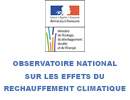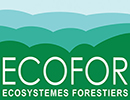Sources and sinks of greenhouse gases (CO2, CH4, N2O) in grazed pasture land and reduction strategies
Sources and sinks of greenhouse gases (CO2, CH4, N2O) in grazed pasture land and reduction strategies
The objective of the GES-Prairies project is to quantify the net emissions of greenhouse gases from French pasture lands and to evaluate scenarios for the reduction of such emissions. The project includes four complementary lines of research:
- a) Measurement of the net emissions of CO2, N2O and CH4 in grazed pasture land and assessment of the balance in terms of global warming potential. On a hill site grazed by lactating cattle (Laqueuille, Puy-de-Dôme), CO2, N2O and CH4 fluxes will be monitored on several hectares during at least two years using micro-meteorological techniques.
- b) The completion, calibration and evaluation (with the above flux data) of a mechanistic model of the grazed meadow ecosystem. The main outputs of the PASIM model are CO2, N2O and CH4 fluxes and C and N stocks of the pasture system. This model, developed and validated by British and Swiss research teams, is already used by INRA researchers within the framework of the REGCLIM programme on the climate change impacts on grassland ecosystems.
- c) The estimation, with this model, of various scenarios of net emission reductions at the scale of the livestock farm. The net balances of greenhouse gas emissions at the experimental site studied (in the Massif Central) and at another site in Lorraine (intensive dairy farm) will be simulated according to different farm management scenarios.
- d) The identification of a method for calculating the national balance of greenhouse gas net emissions of pasture land and cattle herds. In collaboration with LSCE (Nicolas Viovy and Philippe Ciais), a simplified version of the PASIM model will be developed as part of a PhD thesis co-supervised by INRA (scholarship application to CEA, provisionally accepted).
Within the ORCHIDEE model, the simplified version of PASIM will be coupled with the SECHIBA land-surface scheme so as to obtain a spatialized model with a 60 km x 60 km mesh size representing the greenhouse gas emissions of grasslands all over continental France. The entry data (soils, climate, vegetation) are already available at LSCE. Data on livestock farming systems will be provided by the Institut de l’Elevage. This model will make it possible to simulate net greenhouse gas emissions for all French pasture lands on a 60 km x 60 km grid, to analyse within- and between-year variability effects and to examine scenarios of greenhouse gas emission reductions through the adaptation of livestock farming systems. Estimates in terms of CO2 equivalent will be provided along with an analysis of sources of uncertainties and therefore of margins of error.
The project’s findings will lead to improved emission factor estimates of greenhouse gases for grasslands. The methodology used will eventually be accessible to concerned organizations (Ministry of the Environment, CITEPA, Interministry taskforce on the greenhouse effect). This project thus aims to contribute to a consistent approach to the modelling of all greenhouse gas fluxes taking place in French agro-ecosystems.
| Coordinators |
Jean-François Soussana, INRA – Centre de Clermont-Theix |
| Partnership |
IPSL – LSCE |
| Funding |
MEDD
|
| Budget |
168 999.39€ (including tax)
|




